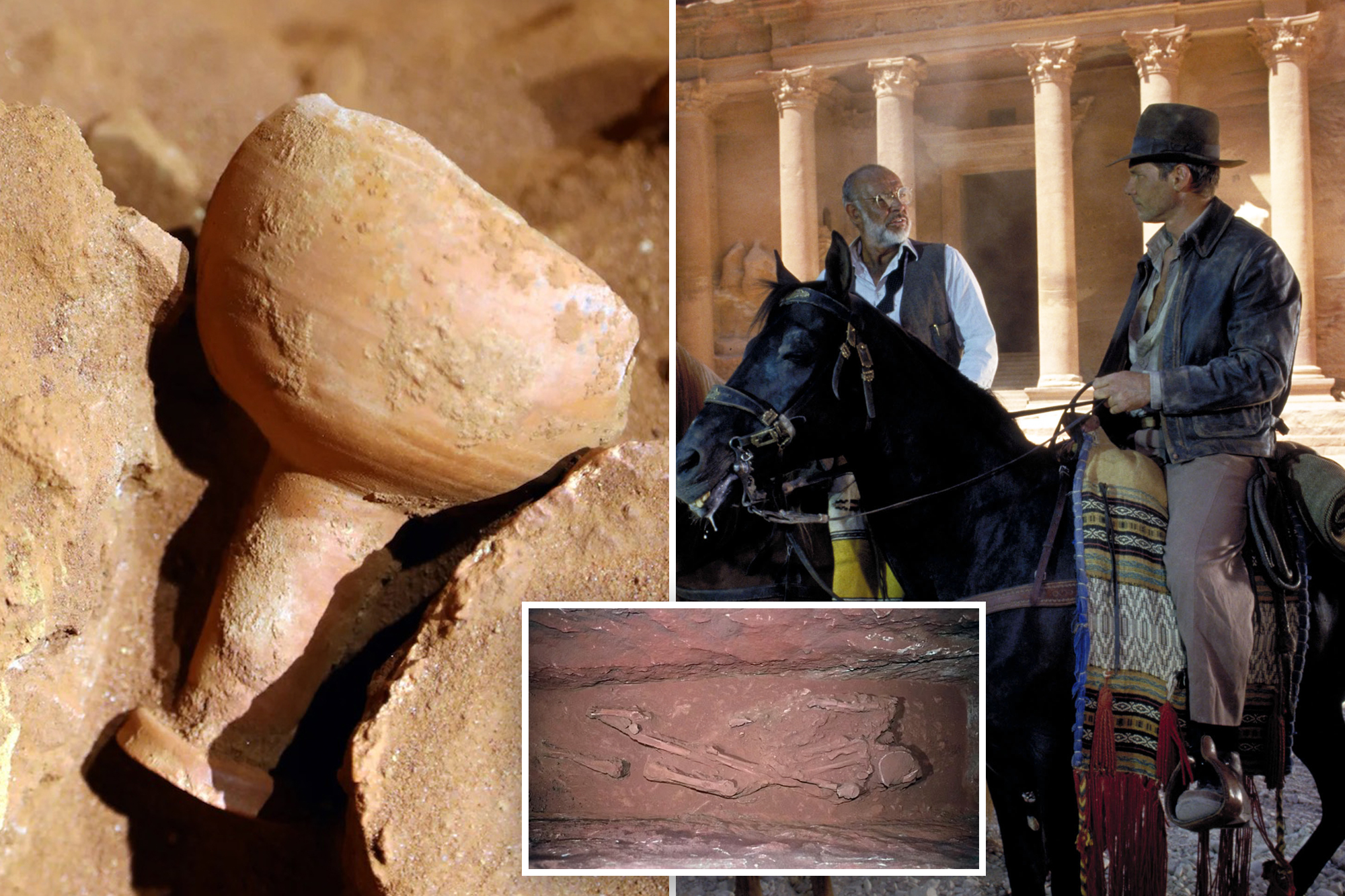
It was like discovering an alien on the set of Independence Day.
Archaeologists have discovered the origins of the iconic “Holy Grail” cup discovered along with 12 human skeletons at the exact location in Jordan where “Indiana Jones and the Last Crusade” was filmed.
Not actually the vessel for an elixir of immortality, the cup is actually a standard drinking cup used by the ancient Nabateans, an advanced people who inhabited the ancient Jordanian city of Petra thousands of years ago.
“It is a humble vessel, not a cup that offers the drinker eternal life,” British archaeologist Claire Isabella Gilmour wrote in The Conversation, rejecting comparisons to the iconic biblical relic.
The ceramic artifact was exhumed in August, along with dozens of the aforementioned dead and other artifacts in the 2,000-year-old tomb beneath Khazneh, the famous and ancient treasury in Petra, Jordan.
The groundbreaking discoveries were made by Dr. Pearce Paul Creasman, executive director of the American Center for Research (ACOR), in collaboration with Josh Gates of Discovery Channel’s “Expedition Unknown,” according to Ancient Origins.
When the so-called “grail” was found, it was held by one of 12 skeletons – evoking the cup from which Jesus drank at the Last Supper.
However, perhaps to the chagrin of Bible buffs, the drink box was actually just a text example of Nabataean pottery, experts discovered.
This ancient dinnerware tends to be very thin – often only 1.5mm thick – suggesting that dinnerware was best suited for ceremonial and local purposes, as it could not travel as well as its sturdier Roman counterparts. .
Nabatean pottery is also often painted with images such as flowers, figures and geometric motifs, the archaeologist writes. “These styles reflect Petra’s status as an important trading point and the Nabatean prowess in creation and invention.”
Perhaps most intriguing was the fact that the cup was discovered on the iconic filming location for Steven Spielberg’s 1989 adventure film – the alleged “grail” even bears a striking resemblance to the spartan-looking prop used in the film.
Despite the similarity, the great discovery of the Grail “is not a case of art imitating life,” Gilmour wrote.
She added that the similarities were not coincidental, but “the result of painstaking research into Nabatean pottery conducted by Deborah Fine, who was director of archives at Lucasfilm Ltd.”
The identity of the 12 occupants of the tomb, meanwhile, remains an Indiana Jones-worthy mystery.
However, the fact that they were buried in separate sarcophagi along with their presence in the Khazneh seems to suggest that they were nobles.
“This may be the largest discovery of human remains within a single area at Petra,” Gates told CNN. “The presence of at least 12 skeletons suggests that the tomb may have served as a burial site for prominent individuals, potentially members of the Nabatean elite.”
He added “They must be extremely important people because where they are buried is such good real estate; indeed it is the main entrance to the city. I think learning who they are will help unlock some of the Treasury’s history.”
Archaeologists also hope that pottery, sediments and skeletal material will help them determine the dates of the warehouse’s construction.
Petra was built during the height of the Nabatean civilization, from the fourth century BCE to the first century CE, the Times Of Israel reported. At its height, the mecca of trade and commerce was home to 20,000 people, making it an anomaly in the desolate Arabian desert.
Today, the ancient metropolis is a UNESCO World Heritage Site visited by millions of people every year.
While Petra has been explored for two centuries, this latest discovery proves that “there are still great discoveries to be made,” according to Gates.
#Scientists #learn #story #holy #grail #cup #famous #Indiana #Jones #filming #location
Image Source : nypost.com